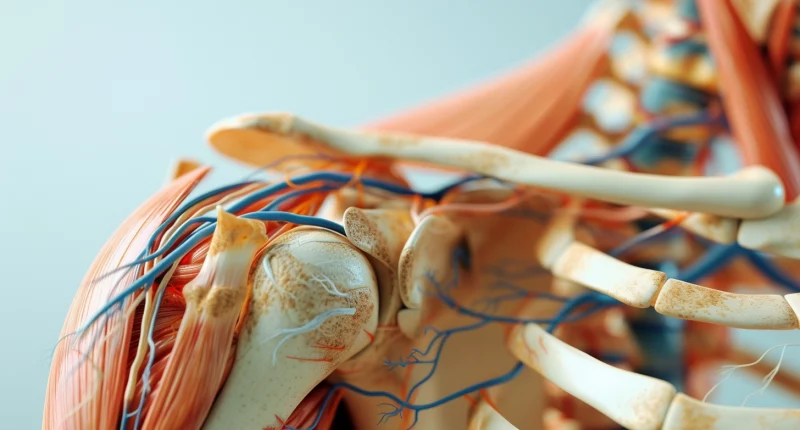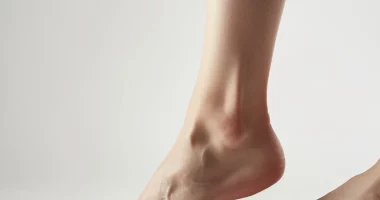Peripheral nerve injury
Overview
Peripheral nerve injury is a type of injury that can lead to unfavorable consequences due to the development of neurological deficits. The peripheral nervous system consists of 43 pairs of motor and sensory nerves extending from the brain and spinal cord, collectively known as the central nervous system, to all body parts. These nerves are vital for enabling sensation, movement, and motor coordination. Peripheral nerves, composed of axon fibers surrounded by insulating tissues, are delicate and susceptible to damage. Such damage, known as peripheral neuropathy, disrupts the brain’s communication with muscles and organs. Peripheral neuropathy can severely impact the body’s ability to perform basic tasks, such as sensing cold feet or facilitating muscle movements required for walking. Early diagnosis and intervention are crucial in managing a peripheral nerve injury. Prompt medical attention can help prevent irreversible complications and permanent damage. In cases of severe nerve trauma, surgical treatment might be necessary to repair or mitigate the injury.
Classification of Peripheral Nerve Injury
- Neuropraxia, a mild form of peripheral nerve injury, typically results from compression-related pathology. In this condition, the structural damage to the nerve is minimal, facilitating a full and relatively quick recovery. The injury involves demyelination of a specific nerve segment at the injury site without harming the axon or surrounding tissue. This usually occurs due to a prolonged lack of blood flow, often from excessive pressure or stretching of the nerve, but does not involve Wallerian degeneration. Symptoms of neuropraxia can include pain, muscle weakness, and numbness, but it does not lead to muscle wasting. There might also be issues with proprioception or the sense of body position and movement.
- In an axonotmesis injury, the axon and its myelin sheath are damaged, while the endoneurium, perineurium, and epineurium remain unharmed. This preservation of the nerve’s external structure allows for eventual recovery despite Wallerian degeneration due to axonal damage. The axonotmesis healing process is more prolonged than neuropraxic injuries, but it typically results in complete recovery.
- Neurotmesis injuries vary in severity and are categorized according to Sunderland’s classification of peripheral nerve injuries (PNIs). A 3rd-degree neurotmesis injury involves the disruption of both the axon and the endoneurium, while the perineurium and epineurium stay intact. A 4th-degree injury is characterized by damage to the axon and the perineurium. Lastly, a 5th-degree injury represents the most severe form, where there is a complete disruption of the entire nerve trunk, affecting all layers of the nerve structure.
Symptoms of peripheral nerve injury
Peripheral nerve injuries can lead to a range of symptoms from mild discomfort to significant disruption in daily life, depending on the affected nerve fibers:
- Motor Nerves: These control voluntary muscles for actions like walking and gripping. Damage can cause muscle weakness, cramps, and uncontrollable twitching.
- Sensory Nerves: Responsible for sensing touch, temperature, and pain, injury to these nerves can result in numbness, tingling, impaired pain or temperature sensation, difficulty in walking or balancing, or challenges in performing delicate tasks like buttoning clothes.
- Autonomic Nerves: These regulate involuntary functions like breathing, heart rate, and digestion. Symptoms of their damage can include abnormal sweating, blood pressure fluctuations, heat intolerance, and gastrointestinal issues.
Symptoms may vary depending on the localization of the nerve
Radial nerve injury
The classic symptoms of radial nerve injury are:
- hand dangling;
- impossibility of active extension of the hand and proximal phalanges of fingers;
- decreased tactile and pain sensitivity on the hand’s radial side and the forearm’s extensor surface.
However, typical symptomatology is not always observed, and often, the signs of radial neuritis are veiled by the severity of the general condition of the victim and local changes in the area of the injured shoulder. Therefore, electromyographic study is mandatory to clarify the diagnosis of this category of patients.
Median nerve injury
The median nerve is responsible for innervation of the muscles that bend the phalanges of the hand and thus provide the grasping function. In addition, the median nerve is responsible for trophizing the tissues of the upper extremity. When this nerve fiber is damaged, a very intense pain syndrome is observed, which sometimes has a causalgic character.
Sciatic nerve injury
Damage to the sciatic nerve at the pelvic region leads to the involvement of its branches of the tibial and peroneal nerves. The posterior muscle group of the femoral region suffers, and the lower leg and foot cease to function normally.
Cranial nerves injury
Among all cranial nerves, the facial nerve takes the first place among the lesions. This condition is manifested by peripheral paralysis of mimic muscles. This is asymmetry of muscles at rest, smoothing wrinkles on the affected side, violation of chewing and swallowing, immobility of the lower eyelid, dysfunction of the lacrimal gland, and failure to retain fluid in the mouth (on the affected side).
Optic nerve injury
Damage to the optic nerve can occur with trauma to the orbit. This condition is characterized by a sharp disturbance of visual function up to blindness. The earlier the treatment is started, the better the prognosis. With delayed help, the death of sensitive cells of the retina occurs.
Recurrent laryngeal nerve injury
During thyroidectomy (surgery to remove the thyroid gland), the recurrent nerve, one of the branches of the 10th craniocerebral palsy called the vagus nerve, may be injured. Most cases of injury to the recurrent nerve are not diagnosed intraoperatively, and suspicion appears in the immediate postoperative period, with the development of a characteristic clinical picture. This involves challenges in breathing, voice disorders, and struggles with speech.
Vagus Nerve Injury
Damage to the main trunk of the vagus nerve is sporadic. It is usually associated with complicated catheterization of the internal jugular vein. Such an injury can be due to both direct damage by a puncture needle and compression by a formed hematoma, especially in patients with hemostasis disorders or arterial injury. Symptoms of vagus nerve damage include a soft palate hanging down on the affected side and difficulty pronouncing the vowel sound “a,” with the uvula displaced to the healthy side. There is hoarseness in the voice because the vocal cord is disturbed. Sometimes, the patient notices difficulties in swallowing food, including liquid food. Some fibers innervate the organs of the cardiovascular and digestive systems as part of the vagus nerve. Therefore, “unexplained” tachycardia, arterial hypertension, and peristalsis with paresis and dilatation of digestive organs may develop.
Causes of peripheral nerve injury
Nerve injuries can be classified as open and closed. The former is usually associated with stab wounds or cuts. Closed ones are caused by severe tissue contusion. Cranial nerves (trigeminal, facial nerves) may be damaged due to jaw fractures, extraction of retained teeth, endodontic treatment, or dental implantation.
Diagnosis of peripheral nerve injury
A doctor might conduct electrical conduction tests to diagnose a peripheral nerve injury to assess how electrical currents travel through the nerves. Key tests include electromyography and nerve conduction velocity, which may be performed during surgery while the patient is under sedation. Additionally, the doctor might utilize various imaging techniques, such as:
- CT scan;
- MRI;
- MRI neurography.
Treatment of peripheral nerve injury
Treatment for peripheral nerve injuries varies based on severity and location. Non-surgical options for mild cases may include acupuncture, massage therapy, medication, orthotics, physical therapy, and weight loss. For more severe damage, specialized peripheral nerve surgeries performed by neurosurgeons might be necessary. These complex procedures include brachial plexus surgery, carpal tunnel surgery, DREZ procedure, nerve repair or graft, free muscle transfer, entrapment surgery, nerve transplant, decompression, and surgeries for sensory nerve issues and thoracic outlet syndrome.
On Doctor.Globally, 494 clinics offer nerve graft repair (https://doctor.global/results/procedures/nerve-graft-repair). Specifically, the price for peripheral nerve injury treatment through nerve grafting in Hungary begins at $1500 (https://doctor.global/results/europe/hungary/all-cities/all-specializations/procedures/nerve-graft-repair).
Rehabilitation after peripheral nerve injury
Rehabilitation and nerve recovery post-injury should include a structured rehabilitation program, starting with gentle massage techniques. Initially, the focus is on relaxation, transitioning to more stimulating massages with moderate pressure as innervation improves. Regular, short sessions are recommended, typically comprising 15-20 treatments followed by a brief break before resuming.
Nerve recovery also benefits from physiotherapy. Treatments like ultraviolet irradiation and ultra-high-frequency therapy have shown positive effects.
Physiotherapy for post-traumatic neuralgia and neuritis focuses on pain management, improving circulation, stimulating nerve regeneration, and addressing factors that hinder regeneration, such as compression from scars or hematomas. It also aims to prevent severe scarring, joint deformities, and muscle atrophy. Rapid improvement in nerve function can be seen when compression is due to a hematoma, with physiotherapy accelerating recovery.
Therapeutic exercises are introduced as active movements return, targeting enhanced neuromuscular transmission.



